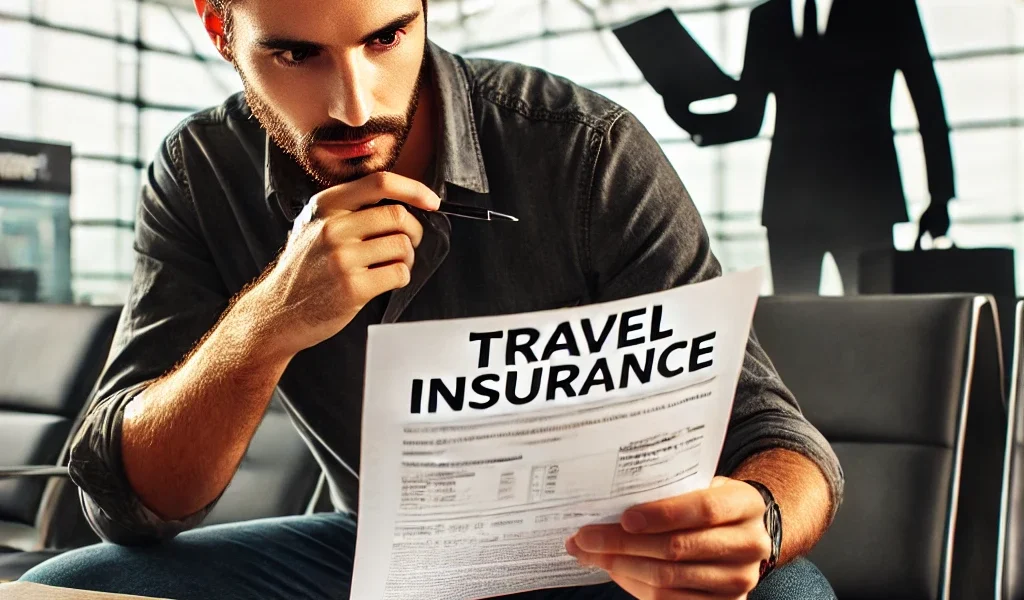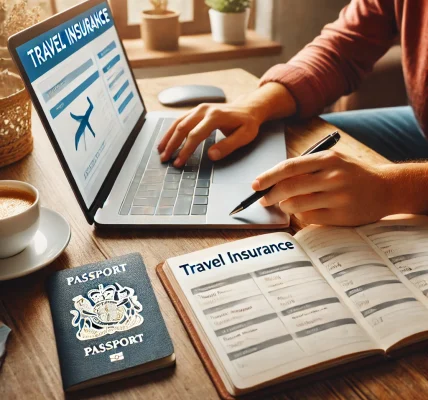Introduction
Travel insurance is essential for safeguarding your trips against unforeseen events such as medical emergencies, trip cancellations, and lost baggage. However, with the rise in demand for travel insurance, fraudulent schemes have also increased, preying on unsuspecting travelers. Falling victim to a travel insurance scam can leave you without protection when you need it the most and result in financial losses.
In this DIY guide, we will explore the most common travel insurance scams, how to identify fraudulent policies, and the best ways to protect yourself from becoming a victim.
Common Travel Insurance Scams to Watch Out For
1. Fake Travel Insurance Providers
Scammers create fake websites and issue bogus insurance policies that have no real coverage. These fraudulent providers appear legitimate, often using professional-looking branding and fake testimonials.
🔍 How to Spot It:
- The company is not registered or lacks a physical address.
- No customer service contact or response to inquiries.
- Policies are significantly cheaper than market rates.
- No proper licensing from an insurance regulatory authority.
2. Misleading Coverage Policies
Some fraudulent providers sell policies that contain loopholes, making it nearly impossible to claim compensation. They might deny claims due to vague exclusions or hidden clauses.
🔍 How to Spot It:
- The policy terms and conditions are unclear or overly complicated.
- High-pressure sales tactics urging immediate purchase.
- The policy excludes common risks but does not highlight them upfront.
3. Duplicate or Fake Policies
Scammers sometimes sell the same policy to multiple people or issue fake documents that appear legitimate but are not backed by a real insurer.
🔍 How to Spot It:
- No official documentation or policy number.
- Inability to verify the policy with the insurer.
- The policy does not come from a well-known or licensed insurer.
4. Claims Processing Fraud
Fraudulent companies make it difficult or impossible for policyholders to claim compensation. They delay processing, demand excessive documentation, or simply ignore claims.
🔍 How to Spot It:
- The company frequently changes claim procedures.
- Unreasonably long waiting times for responses.
- Sudden policy cancellations after filing a claim.
5. Phishing and Identity Theft Scams
Some scammers pose as travel insurance agents or customer service representatives, asking for personal information such as passport details, bank account numbers, and credit card details.
🔍 How to Spot It:
- Unsolicited emails, phone calls, or messages requesting sensitive information.
- Links to fake websites resembling legitimate insurance companies.
- Requests for payments through unofficial methods like cryptocurrency or gift cards.
How to Protect Yourself from Travel Insurance Scams
1. Verify the Legitimacy of the Insurance Provider
Before purchasing a travel insurance policy, ensure that the provider is reputable.
✔️ Steps to Verify:
- Check for licensing with regulatory authorities like the Insurance Regulatory and Development Authority (IRDAI) or equivalent in your country.
- Read reviews from multiple independent sources (Trustpilot, Better Business Bureau, etc.).
- Verify their customer support details and response time.
2. Read the Policy Carefully
Always read the fine print of any insurance policy to understand the coverage, exclusions, and claim procedures.
✔️ What to Look For:
- Exact details of what is covered (medical expenses, trip cancellations, baggage loss, etc.).
- Clear exclusions and limitations.
- Contact details for filing claims and emergency assistance.
3. Avoid Unrealistic Offers
If a deal sounds too good to be true, it probably is. Beware of policies that are significantly cheaper than the industry standard.
✔️ How to Stay Safe:
- Compare multiple policies before making a purchase.
- Be cautious of limited-time offers and high-pressure sales tactics.
4. Use Secure Payment Methods
Always make payments through secure and traceable methods, such as credit cards or direct bank transfers.
✔️ Red Flags to Avoid:
- Requests for payments via wire transfers, cryptocurrency, or gift cards.
- No official receipts or confirmation emails after purchase.
5. Report Suspicious Activity
If you suspect a scam, report it to your local consumer protection agency, insurance regulator, or law enforcement authorities.
✔️ Where to Report:
- Federal Trade Commission (FTC) (U.S.)
- Action Fraud (UK)
- Insurance Regulatory Authorities (Country-specific)
What to Do If You Have Been Scammed
If you realize you’ve purchased a fraudulent policy, take immediate action:
- Contact Your Bank: If you paid via credit card, request a chargeback to recover funds.
- Report the Fraud: Notify relevant consumer protection agencies and insurance regulatory bodies.
- Monitor Your Personal Data: If you shared sensitive details, monitor your accounts for identity theft or fraudulent transactions.
- Warn Others: Share your experience on travel forums and review sites to prevent others from falling into the same trap.
Conclusion
While travel insurance is a must-have for protecting your trips, it’s essential to be cautious of fraudulent schemes. By verifying providers, reading policies carefully, and staying alert for red flags, you can safeguard yourself from travel insurance scams. Following the DIY tips in this guide, you’ll be better prepared to choose a legitimate and reliable travel insurance policy while avoiding potential fraud.
If you have any questions or need help finding a trusted travel insurance provider, feel free to reach out!




